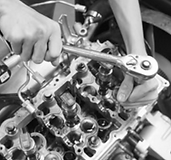Engineering and Technology Quarterly Reviews
ISSN 2622-9374




Published: 14 December 2020
Assessment of the Scale of Artisanal Mining in Bangwe Township, Blantyre
Jabulani Matsimbe
University of Malawi

Download Full-Text Pdf
10.5281/zenodo.4319255
Pages: 84-90
Keywords: Bangwe Hill, Mpingwe Hill, Mining Method, Quarrying, Small Scale Mining, Social Enhancement
Abstract
Even though mining contributes less than 1 % to Malawi’s gross domestic product (GDP), it is central to the government’s sustainable development goals strategy and spearheaded to be the backbone of Malawi’s economy. Little is known about the scale of artisanal quarry mining production, mining methods used, capital requirements, its diversity and distribution across different areas in Malawi. Present study seeks to fill that gap by assessing the scale of artisanal and small scale quarry mining activities in Bangwe Township. With a population of 170, 350, it represents 21% of the total population of Blantyre city which has 809, 397 people. The township was chosen as it is the main hub and supplier of artisanal aggregates to surrounding areas in Blantyre. In addition, the township has many unemployed youth with a high potential to get involved in artisanal mining thereby improving their lives. Most youth have a negative perception about artisanal mining as it is viewed as a non-profit making and labour intensive business. There are no gemstone mining sites in Bangwe Township. It was also found that there are 7 artisanal quarry mining sites in the township comprising Ntopwa, Mpingwe, Mvula, Number One, Namatapa, Namiyango and Chikunda. On average, each quarry mining site produces 5 wheelbarrows per day and sells at US$2.66 per wheelbarrow. As most builders require quarry for construction projects, the quarry miners sell at least 0.5 tonnes per day. The output of this study has created a database of artisanal quarry mining activities and the level of active youth involvement in artisanal mining in Bangwe Township. Policy makers will use the new knowledge to develop strategies that will foster the growth of artisanal quarry miners and empower the youth to join the artisanal mining business.
References
Elisante E. (2009). Simplification of Jaw crusher for Artisanal Aggregates Miners. Journal of Engineering and Technology Research Vol.1 (6), pp. 102-108.
Government of Malawi. (2014). Artisanal and Small Scale Mining Policy. https://mininginmalawi.files.wordpress.com/2014/11/2014.
Hentschel, T. (2002). Global Report on Artisanal & Small-Scale Mining. Minerals, Mining and Sustainable Development. https://pubs.iied.org/pdfs/G00723.
Kaonga C, Kambala C, Mwendera C, Mkandawire T. (2013). Water quality assessment in Bangwe Township, Blantyre City, Malawi. African Journal of Environmental Science and Technology, https://doi:10.5897/AJEST12.196
Kumi-Boateng, B. and Stemn, E. (2020). “Spatial Analysis of Artisanal and Small-Scale Mining in the Tarkwa-Nsuaem Municipality of Ghana”, Ghana Mining Journal, Vol. 20, No. 1, pp. 66 - 74.
Malunga G. (2018). The Geology and Mineral Potential of Malawi. Technical File, Mining and Trade Review.
Phoya R.E. (2015). Formalising for Development: Artisanal and Small-Scale Mining in Malawi’s Draft Mining Legislation. Assignment for module CP 50040 ‘International and Comparative Mineral Law and Policy CP 50040’ Submitted towards LLM in Natural Resources Law and Policy (Centre for Energy, Petroleum and Mineral Law and Policy, University of Dundee). https://mininginmalawi.files.wordpress.com/2018/07/r-etr.
Stephens M. (2015). Malawi extractives industry transparent initiative report. Aldersgate Street London. https://eiti.org/document/malawi-eiti-report-20152016.
World Bank. (2019). State of the Artisanal and Small-Scale Mining Sector. Washington, D.C.: World Bank.
Zvarivadza T. 2018. Artisanal and Small-Scale Mining as a challenge and possible contributor to Sustainable Development. Resources Policy 56 (2018) 49–58. https://doi: 10.1016/j.resourpol.2018.01.009.
